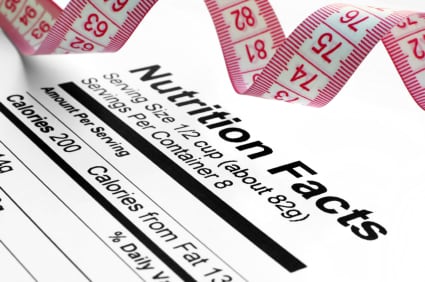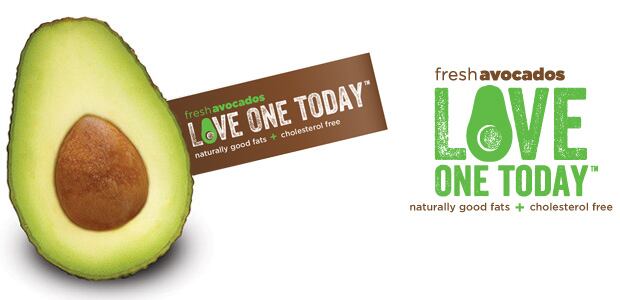Despite concerns over logistical headaches from changes to serving size and Reference Amount Customarily Consumed (RACCs) in one sitting, manufacturers have some tools at their disposal—namely data and a story to tell the consumer—that may make the changes easier to swallow, as panelists told attendees of the Institute of Food Technologists’ (IFT) 2014 Meeting and Expo in New Orleans this week.
Changes to RACCs (and claims)
One of the most notable proposed changes is in what’s considered a “single” serving container, which would not only impact macronutrient content but also health claims. Current regulations deal with containers only up to 200% of RACC per occasion. But the new proposal would include up to 400% of the reference amount. (Read the complete FDA guidance on proposed labeling changes here.)
“What is being proposed is that container less than two times the reference amount would be a single serving,” Betty Campbell, EAS Consulting’s senior advisor for labeling and claims, told attendees. “A 16-ounce drink and a two-ounce bag of potato chips are a single serving. If it’s bigger than that, from 200 to 400%, then you need to declare two columns of information—one for the serving size and one for the whole container.”
That same approach will also apply to packages of discrete units, which would be based on the number of units closest to the RACC. “My favorite discrete unit example is cookies,” Campbell said. “Some cookies are very big; some are small. Now the new label will have two columns of data: one for serving size and one for the entire unit. That could be big cookies or a package of muffins, and sometimes those get to be big.”
The big concern for many is that the basis for certain health claims will inevitably change—particularly because the FDA hasn’t proposed to change rules for claims. For example, RACCs for carbonated and noncarbonated beverages (including water, coffee and tea) would increase from from eight to 12 fluid ounces, meaning a single serving is now a 12-ounce soft drink.
“With the proposed changes, there’s no more ‘1.5 serving’ option, so you have to ask yourselves and your companies: How will changes in (Daily Values), RACCs and serving sizes affect claims you’re making on your product? If you were right on the cusp with your DV and the percent DV goes down, you may no longer qualify for a good claim. Existing definitions will have impact and you need to figure out what that is.”

It’s better to comment with data than just to comment
Manufacturers looking to challenge any of the recommendations can take advantage of National Health and Nutrition Examination Survey (NHANES) data, which the FDA used to help draw up the proposed labeling changes, said Victor Fulgoni III PhD, Nutrition Impact LLC.
“It’s better to comment when you have data than just to comment,” he noted. (The comment period closes Aug. 1, 2014.)
“The FDA used 2003 to 2008 data for current food intake. You can find data on roughly 4,000 different foods consumed in any one cycle, so you can find where your food fits in NHANES analysis,” Dr. Fulgoni said. “There are good data driven rules for changing RACCS, which is important as you analyze that to see if you may refute that.”
A self-confessed “data geek”, Dr. Fulgoni added that it was no small task for the FDA to analyze such a massive amount of data in order to revisit labeling changes, the industry in turn has to ask questions and do some data analysis of its own in the meantime—especially as newer data will be available in the coming months.
“We’re nowhere near the final rule. There’s been pressure to complete this, but when that happens the 2011-12 data will be available. It might be warranted to see how things have changed. For example, sugar intake has dropped over the last decade. Has that changed enough, and where do we stop the cycle with the FDA to create a baseline?”
Another potential area of concern surrounds how intake is measured, which could notably impact accuracy in nutritional adequacy, Dr. Fulgoni said. While the National Cancer Institute looks at single-day intake and the FDA analyzed day one and two data, Nutrition Impact is assessing usual intake for a better understanding of how intake is distributed across the population
“With single-day intake, the distribution has significant tails and a compressed central tendency. The two day mean is better, but still the distribution is spread out. We’ve done a usual intake assessment to remove individual variation. The FDA is looking at the 90th percentile of intake, which can be very different depending on the methods you use. We plan to provide comments suggesting they also look at usual intake. It would take significant computing power to get it done, but it’s critical for measuring nutrient adequacy; otherwise, you get a gross overestimate of the population that’s below adequacy.”
New labels means a chance to recalibrate marketing strategies
Beyond the changes to the regulatory aspects of Nutrition Facts and the data yet to be analyzed, the proposed change is a “historic occasion”—being the first such update in 20 years, but also in the marketing and branding opportunity it presents, said Robert Post, POhD, chief scientific officer of food and nutrition consultancy Foodminds.
“The book has been opened,” he added. “You have an opportunity to look at the nutrition label and everything relating to nutrition in the marketing of your products and really think about the health and wellness platform you can create.”
Today’s nutrition landscape is very different from 1994, as consumers struggle to make sense of what (and how much) to incorporate in their diets, Dr. Post said, noting that areas such as good vs. bad fat and DVs cause a lot of confusion.
“Consumers don’t realize that the information exists on the current label to help them interpret their choices in the context of their daily diet,” he said. “They don’t consider consumption of food and beverages in the context of their daily diet. How can you help consumers understand the changed label and ensure continued marketability?”

Think of Nutrition Facts as the centerpiece of your brand’s story
Every company has a tool kit to work with—be it calories in the context of a day, nutrition content, comparative claims, health or structure function claims. How to communicate those claims requires approach that is a thoughtful assembly of nutrition and health attributes, which Dr. Post referred to as CLEAR (Creativity, Language, Emotion, Advantage, Rationale).
He used a recent Hass Avocado Board campaign, “love one today" (pictured), to illustrate CLEAR in action.
“In terms of brand identity and creativity, it is giving consumers who are already eating fresh avocados a reason to eat more,” he said, referring to the “good fats” angle of the tagline. “The current RACC, which is one-fifth of an avocado, isn’t a good source of anything. So they’re reframing the reference point by not referring to a serving size and turning a higher fat fruit into a desired source of naturally good fat.”
The slogan “love one today” plays to emotions with an inherent call to action in “one today”. The campaign also has the advantage of a good story to tell with respect to fat. “Consumers understand that it’s the fat in avocado that makes them tastes good, but it’s also cholesterol free—like a luscious sin without the sinning.”
So is it working? “Consumer demand for fresh Hass avocados is up—way up,” he noted.
The example also reinforces that “it’s what you say about your product,” Dr. Post said. “The Nutrition Facts act as the center point to help you tell better story. Think about now as that time to establish strategic marketing communications to ensure your products are used and perceived as they should be used and perceived.”
